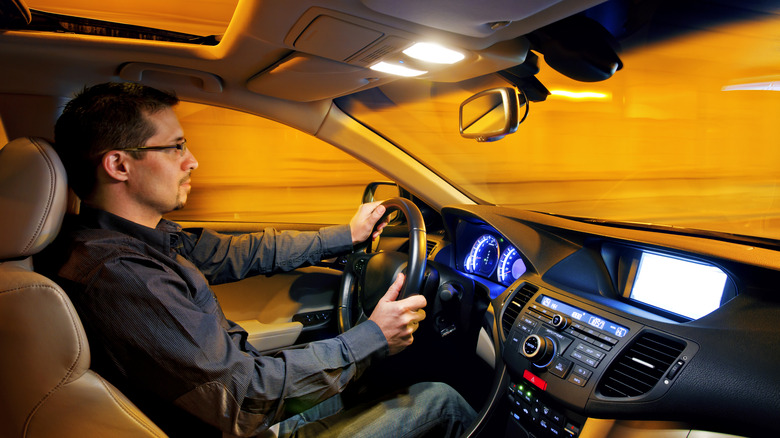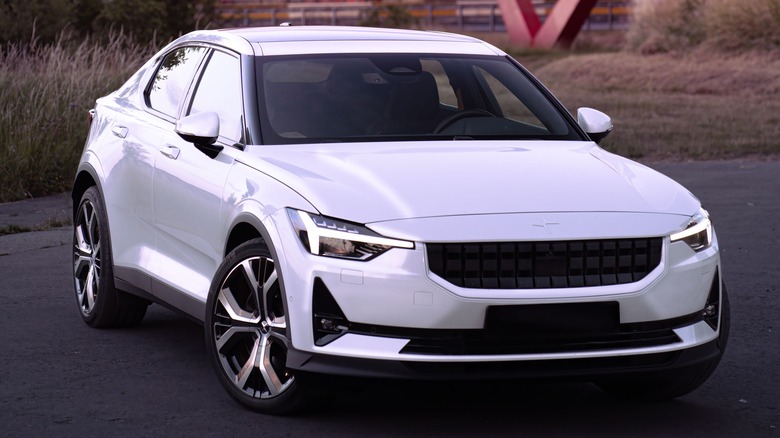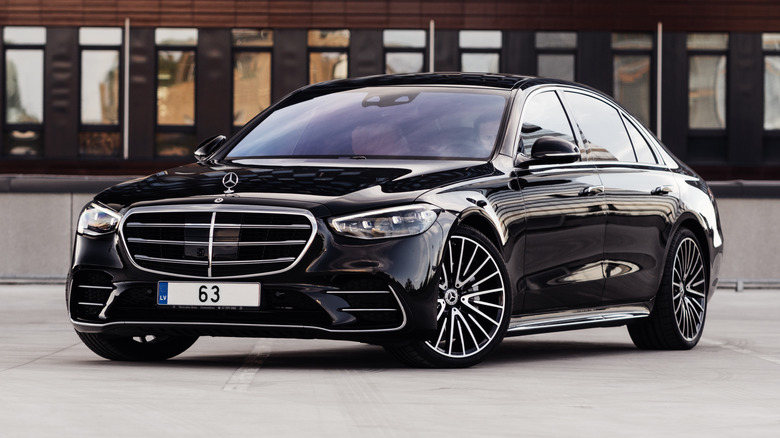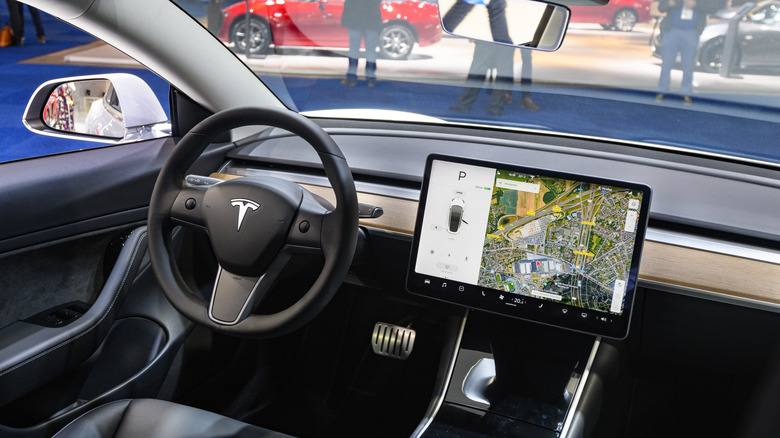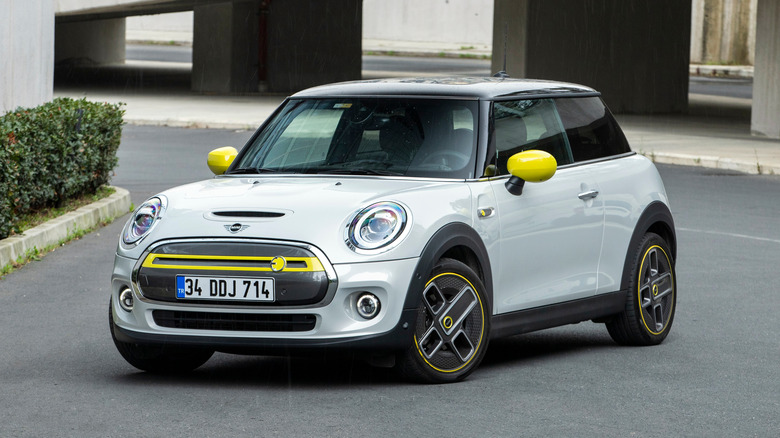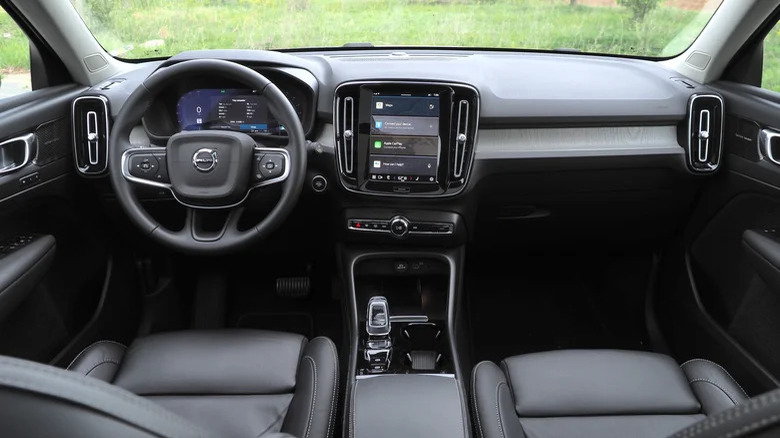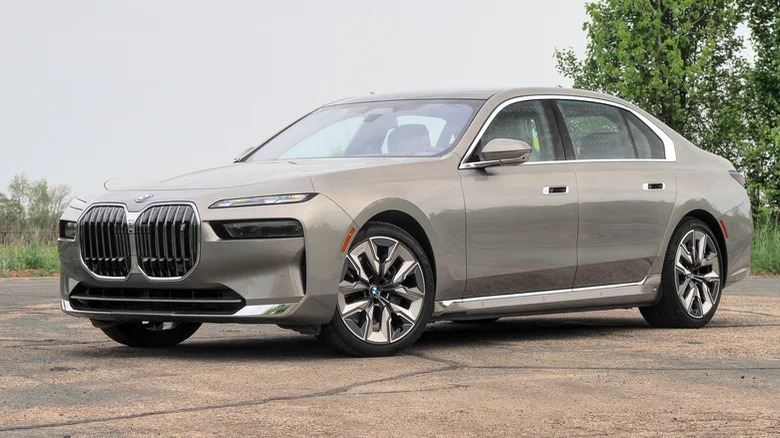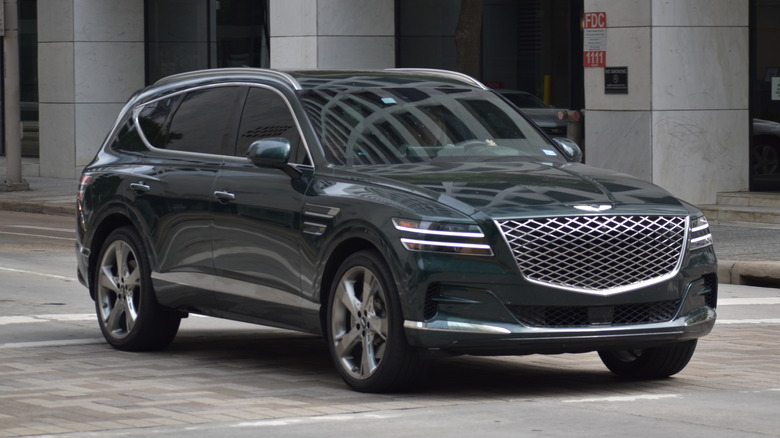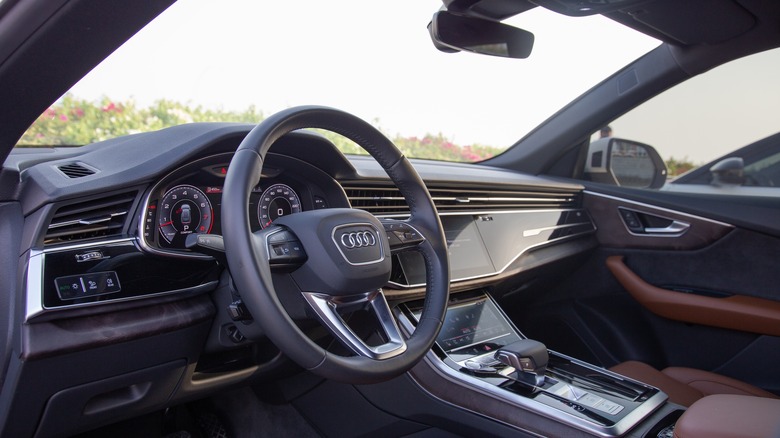8 Car Brands With The Best Built-In Voice Assistants
A recent study by insurance group Allianz found that the presence of an in-car touchscreen or central infotainment system can increase the risk of crashing by up to 44%. This is primarily due to drivers becoming distracted while trying to find a certain feature or function, and the problem is exacerbated by the recent trend of manufacturers hiding key controls behind several layers of menus that aren't easy to use while on the road.
Voice assistants provide a solution to this increasingly common problem, allowing drivers to control a car's features without taking their eyes off the road. They're not always implemented well — in fact, the worst in-car systems can be pretty terrible — but on the flip side, the best assistants allow drivers to take full advantage of a car's infotainment system without needing to master complicated menus or cluttered interfaces. These built-in voice assistant systems are among the best we've seen so far.
Polestar
Polestar was the first automaker to use Android Automotive OS as its in-car operating system, while most car manufacturers prefer to make their own systems and then integrate third-party apps and services instead. This has given Polestar a few unique advantages over other automakers, with a key advantage being the ability to use Google Assistant to remotely control the Polestar 2.
Many people will be familiar with using Google Assistant through Android Auto, but by using Android Automotive OS, Polestar owners are also able to check on things like the car's battery level, cabin temperature, and status. This information can be accessed anywhere the user is connected to Google Assistant, including through home assistant devices like the Nest Audio, or a smartphone. Voice control can also be used to remotely start the car and preset cabin temperature, so it's ready to go by the time the driver gets in. Automakers like GM have begun to ditch Android Auto and Apple CarPlay for their own in-house systems, but the convenience of Polestar's Google-based system proves that tighter integration with the tech giant's platform can potentially be a very useful thing for drivers.
Mercedes-Benz
Although it's only a pilot scheme limited to the U.S. for now, Mercedes-Benz's ChatGPT integration is a promising addition to the automaker's MBUX infotainment system. Most in-car voice assistants are limited in what they can do — for example, you can control the air conditioning, media system, or navigation — but using ChatGPT, Mercedes hopes to give drivers access to a wider array of questions and commands. Recommending things like nearby restaurants or hotels, as well as answering non-driving-related questions, ChatGPT functions as an in-car search engine without the need to use a phone.
Integrating the AI system also helps the voice assistant sound less like, well, a voice assistant. ChatGPT is trained to use language in a more natural-sounding way than other in-car systems, with its vast database giving it the ability to respond on a wide range of topics. After the initial trial period ends, Mercedes is planning to launch MBUX ChatGPT integration across international markets, as well as improving the current beta version of the feature that's already available to American drivers.
Tesla
One of the most annoying features of any voice assistant is when it falsely identifies a wake word and turns itself on. The leading voice assistants from Google, Amazon, and Apple are in general much better at filtering out these false triggers than they used to be, but the same cannot be said about certain carmakers' systems. Tesla gets around the issue of false triggers by only waking the voice assistant when a button is pressed, either on the steering wheel or the touchscreen, depending on the model.
Tesla's assistant can also recommend things like nearby gas stations, restaurants, or even museums, which can then be selected as navigation destinations. Rather than harnessing the power of an AI chatbot like ChatGPT, Tesla integrates a Google search function, where drivers can request a search term and results will pop up in the car's web browser. Being Tesla, there are also some hidden Easter egg voice commands for drivers to discover, but we won't spoil those here.
Mini
In July 2023, Mini unveiled an overhaul of its interior, with a retro-modern design that includes plenty of new tech. As well as improving its infotainment to keep it competitive with the brand's main rivals, the update also includes some new features designed to differentiate the Mini's onboard systems from those of its parent company, BMW. Chief among those is a new, Mini-specific voice assistant. As well as doing all the usual voice assistant things like controlling the cabin temperature, navigation functions, and telephone commands, Mini says the new assistant will be able to engage in "chit-chat" while on the road.
This includes things like telling jokes, answering questions like "do you like me," and telling stories. The new abilities utilize Amazon Alexa-based technology, but rather than drivers asking Alexa, the system will instead respond to "Hey Mini." The voice assistant is also able to tell whether the driver or front passenger is making the voice request and change its response appropriately.
Volvo
Polestar might have been the first automaker to adopt Android Automotive OS, but it didn't take long for its sister brand Volvo to make the switch as well. The new system is included on cars like the 2023 XC40 crossover, where we tested it and found it to be a significant improvement over the old assistant. The move was first announced in 2022, alongside the news that YouTube streaming would also be integrated into Volvo's infotainment system.
Using Google's assistant technology for the built-in voice assistant has several distinct advantages, not least the fact that it benefits from regular, over-the-air updates. It also allows for optimal integration into the Google ecosystem, with Android smartphone users benefitting the most from the new system. Apple CarPlay is still included for the XC40, although it's not wireless, which seems like an odd omission for what's otherwise a very sleek and intuitive system.
BMW
BMW's attempts at controlling the myriad functions and features available to drivers have not always been successful. For example, the infotainment gesture system launched in some 2023 models was more of an annoyance than anything else, with its system being generally clunky to use and prone to being accidentally triggered. However, its voice assistant is one of the better in-car systems on the market, coming in especially handy in cars like the 2023 BMW i7, where finding a needed function can be a very distracting experience.
With so many options and menus to navigate through, we found it to be less hassle to use the "Hey BMW" command than it was to use the standard controls. Luckily, BMW assistant is both fairly capable and straightforward, providing an easy way to make full use of the features that the luxury limousine has to offer. It can't claim to be as well integrated into the wider Google or Apple ecosystem as certain other carmakers' assistants are, but used in tandem with Apple CarPlay or Android Auto, it makes for a worthy on-the-go companion.
Genesis
Hyundai's luxury offshoot Genesis has made waves with its most recent crop of cars, providing comparable driving experiences to the industry's biggest players while undercutting them on price. Part of that appeal comes from its impressive array of connectivity and comfort features, all of which can be controlled through the built-in voice assistant. We've sampled the system in several Genesis cars including the 2023 Electrified G80, and can confirm it's one of the better assistants on the market.
Android Auto and Apple CarPlay are also integrated as backup, but the built-in assistant can handle everything from rolling down the window to pulling up weather information. There is a catch: Making full use of the assistant's capabilities will require Genesis Connected Services, which is included free for the first three years of ownership, but requires a $99 per year subscription after that. Without the subscription, basic commands will still function, but those requiring an internet connection will not.
Audi
Voice assistant systems can often struggle with recognizing commands from drivers with strong or non-American accents, but Audi's voice assistant uses speech training to learn the individual inflections of its driver. Over time, the assistant can adapt to accent variation, which should lead to more accurate responses the more the system is used. Our British-accented reviewer found the system was generally reliable when testing the Audi Q8, even without the extra speech training.
Like many of the best assistants, the Audi system can also interpret commands like "I'm hungry" or "I'm cold" and respond accordingly, pulling up nearby restaurants or adjusting the cabin temperature. While some drivers will prefer using wake words, Audi's system requires pressing a button on the steering wheel to activate. That helps cut down on false triggers, although the downside is that with Android Auto or Apple CarPlay connected, Google Assistant and Siri are also operated through the same button.
